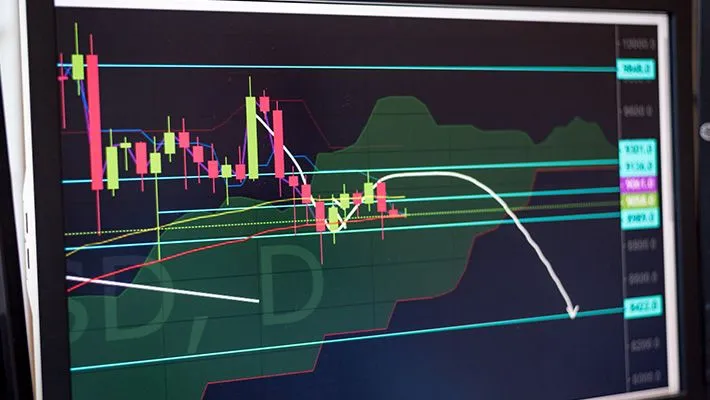Monday Nov 27 2023 10:55

7 min

Image by Pexels
In trading or investing, two popular strategies often come into play: selling into strength and selling into weakness.
These approaches represent distinct ideas and carry their unique sets of advantages and drawbacks.
In this comprehensive guide, we'll delve into both strategies, explore their applications, and help you understand when to employ each for optimal results.
Selling into strength is a trading strategy that involves offloading assets when their prices are surging, reaching new highs, or exhibiting signs of overvaluation.
It's a tactic where traders capitalise on the prevailing optimism and strong buying interest in the market to secure profits.
Conversely, selling into weakness is a strategy where traders sell assets during a downtrend or when prices are declining. This approach is based on the belief that further price depreciation is likely, allowing traders to profit from falling markets.

Profit booking: One of the primary objectives of selling into strength is to book profits while the asset's value is relatively high. Traders anticipate a potential price reversal and aim to maximize their gains.
Risk management: This strategy helps mitigate the risk of holding onto assets for too long, where market sentiment can quickly shift, leading to financial losses.
Market timing: Selling into strength requires precise market timing. Traders closely monitor technical indicators, market sentiment, and news to identify the optimal exit point.
Psychological factors: Selling into strength can be emotionally challenging, as it often goes against the prevailing optimism. Traders need discipline and a well-defined exit plan to execute this strategy effectively.
Overbought conditions: When an asset is in overbought territory, indicating that its price has risen significantly and is likely to correct.
Technical resistance: Selling into strength is often employed when an asset approaches key resistance levels, suggesting potential price pullbacks.
Earnings announcements: Traders may use this strategy ahead of corporate earnings announcements, capitalising on price run-ups before the actual results are released.

Short selling: Selling into weakness often involves short selling, a technique where traders borrow assets they don't own and sell them, hoping to repurchase them later at a lower price.
Profit from declines: Traders using this strategy aim to profit from declining asset prices. They believe that the market sentiment is likely to worsen, causing further price drops.
Risk management: Risk management is crucial when selling into weakness, as unexpected price rebounds can lead to significant losses. Traders must use stop-loss orders and set clear exit points.
Contrarian approach: Selling into weakness is a contrarian approach, where traders go against the prevailing sentiment. It requires conviction and a deep understanding of market dynamics.
Bearish trends: This strategy is ideal during bearish market conditions when overall sentiment is pessimistic, and assets are in a sustained downtrend.
Technical breakdown: Selling into weakness can be employed when an asset breaches key support levels, indicating a potential further decline.
Negative news: Traders may use this strategy when negative news or events significantly impact an asset's value, causing a sharp decline.
Now that we've explored the fundamentals of both strategies, let's compare them based on various aspects:
Strength: Selling into strength aligns with bullish market sentiment, where traders take advantage of optimism and enthusiasm.
Weakness: Selling into weakness goes against the prevailing sentiment, requiring a contrarian approach.
Strength: This strategy aims to secure profits when an asset is at its peak, anticipating a potential price reversal.
Weakness: Selling into weakness seeks to profit from declining asset prices during downtrends.
Strength: Lower risk compared to selling into weakness, as the asset is still in an uptrend. However, the potential reward may be limited.
Weakness: Higher risk due to the potential for price rebounds, but it offers substantial profit potential if the downtrend continues.
Strength: Requires precise market timing to exit at the optimal point. Traders must closely monitor technical indicators.
Weakness: Timing is crucial, but it's often easier to identify weakness during a downtrend.
Strength: Can be emotionally challenging to sell when the market is bullish. Discipline and a clear exit plan are essential.
Weakness: Requires conviction to go against the market sentiment. Traders must be mentally prepared for contrarian trading.
Choosing between selling into strength and selling into weakness depends on your market outlook, risk tolerance, and trading style.
Each strategy offers distinct advantages and challenges, and successful traders often incorporate both into their trading toolbox.
Remember that effective risk management, discipline, and a thorough understanding of market conditions are crucial for implementing either strategy successfully.
Whether you're riding the wave of optimism or swimming against the current of pessimism, a well-thought-out plan is your best ally in navigating the dynamic world of financial markets.
Take your first step toward mastering the art of trading by opening a risk-free CFD trading demo account with us.
Practice your strategies, explore the markets, and build your confidence without risking your capital.
You can join markets.com today and become a more skilled and confident trader.
"When considering "CFDs" for trading and price predictions, remember that trading CFDs involves a significant degree of risk and could result in capital loss. Past performance is not indicative of any future results. This information is provided for informative purposes only and should not be construed to be investment advice."